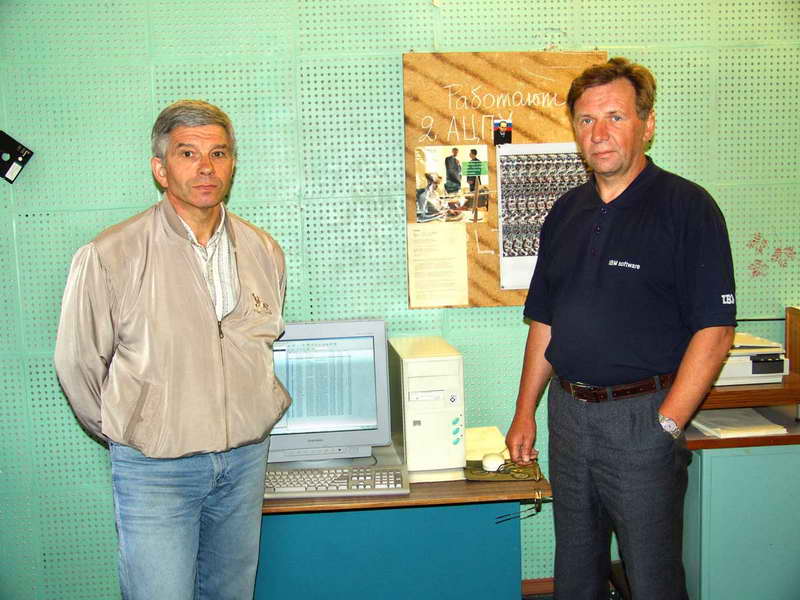The Sector was founded in 1995 on the base of the Multi-institute Computer Center that existed since 1973 and headed by Technical Sciences candidate V. N. Chikhman. The main tasks of the Sector are development and application of automation means of experiment, treatment of signals and image, tools of connection with global computer network Internet, control of computers in laboratories, consultations as well as participation in performance of the Institute research programs.
The Sector has developed a number of tools of experiment automation, specifically, modules of feeding computer with information using ACP plates inserted into an AT BUS, a discrete input-output. The corresponding software under control of the operational medium Windows/95/98/ME is developed. To feed the memory of the IBM PC-compatible computer with electrophysiological signals, a number of hardware modules are realized and applied: an 8-channel analog-digital converter (ADC), a 4-channel amplifier of biopotentials, etc. Based on these tools, softwares are developed for automation of various electrophysiological experiments. In the process of performance of research projects of the Russian Foundation for Basic Research, new hardware-software modules are developed for experiments on study of the human visual system, new results are obtained on studies of mechanisms of the spatial vision, etc. computer with information using ACP plates inserted into an AT BUS, a discrete input-output. The corresponding software under control of the operational medium Windows/95/98/ME is developed. To feed the memory of the IBM PC-compatible computer with electrophysiological signals, a number of hardware modules are realized and applied: an 8-channel analog-digital converter (ADC), a 4-channel amplifier of biopotentials, etc. Based on these tools, softwares are developed for automation of various electrophysiological experiments. In the process of performance of research projects of the Russian Foundation for Basic Research, new hardware-software modules are developed for experiments on study of the human visual system, new results are obtained on studies of mechanisms of the spatial vision, etc.
The Sector contains the Center of treatment of images of biological objects.
On the base of integrated and developed hardware-software tools, feeding a computer with and a digital treatment of various biological objects is realized; specifically, a morphometrical analysis was performed of clusters of initial neurons of cat visual cortex fields, feeding with images of individual nervous plexuses for measurement of receptive field areas, of length of fibers, etc.
In the Center of treatment of images there was performed work on development of model of adaptive image segmentation and of modules for statistical analysis of cytogenetical data in studying functional state of genetical apparatus in animal brain cells. New algorithms are developed of measurement, classification, and mathematical analysis of the space-brightness, geometrical, and texture characteristics of chromatin and heterochromatin areas with different optical density in neuronal nuclei of the developing brain of rat embryos.
At present the Sector performs investigations of visual perception of incomplete images; works are carried out on design and control of telecommunication systems providing work of local computer networks, their connection with the global network Internet. Perspective of further works is connected with development of these directions on a new technological base. |